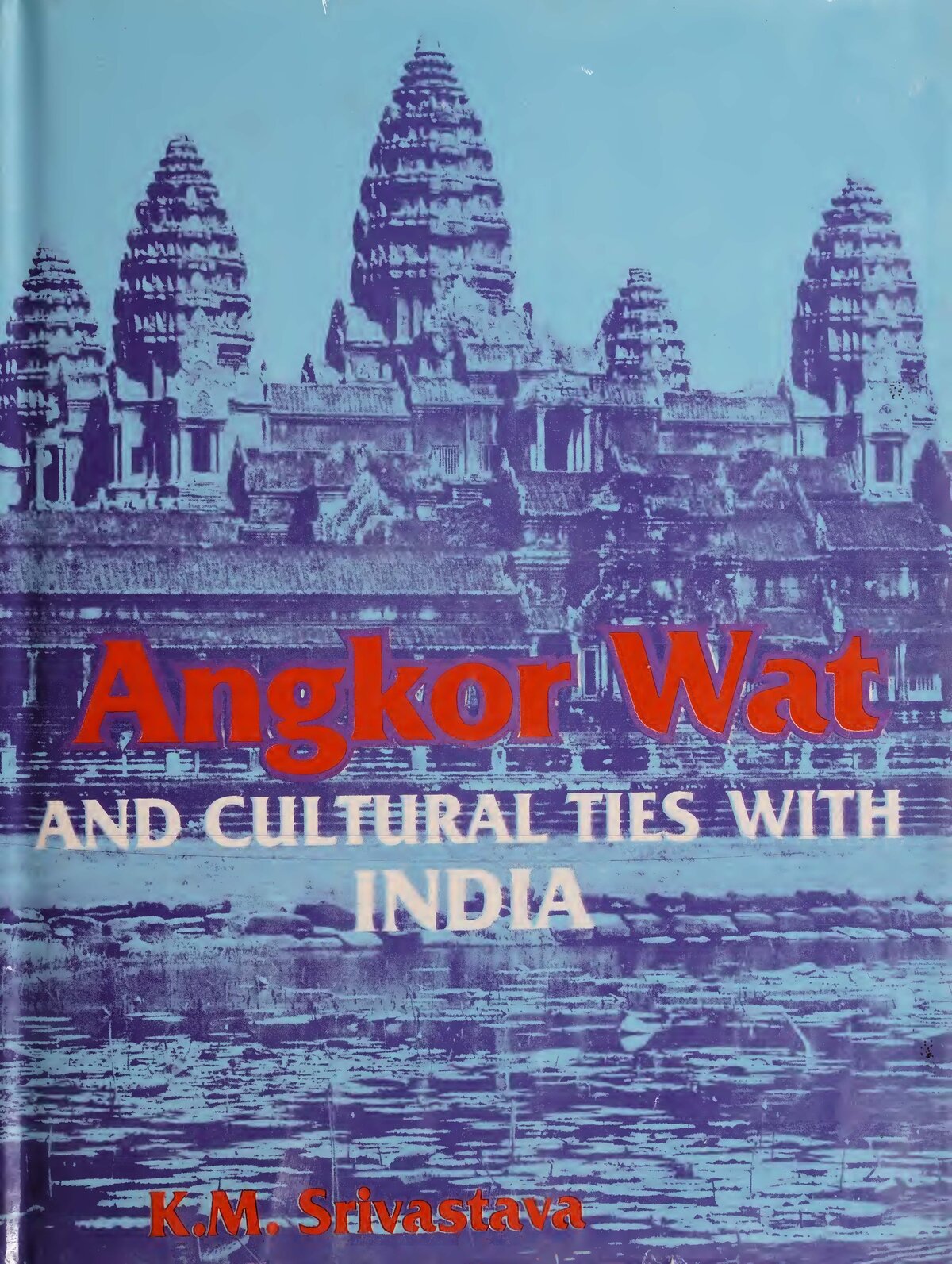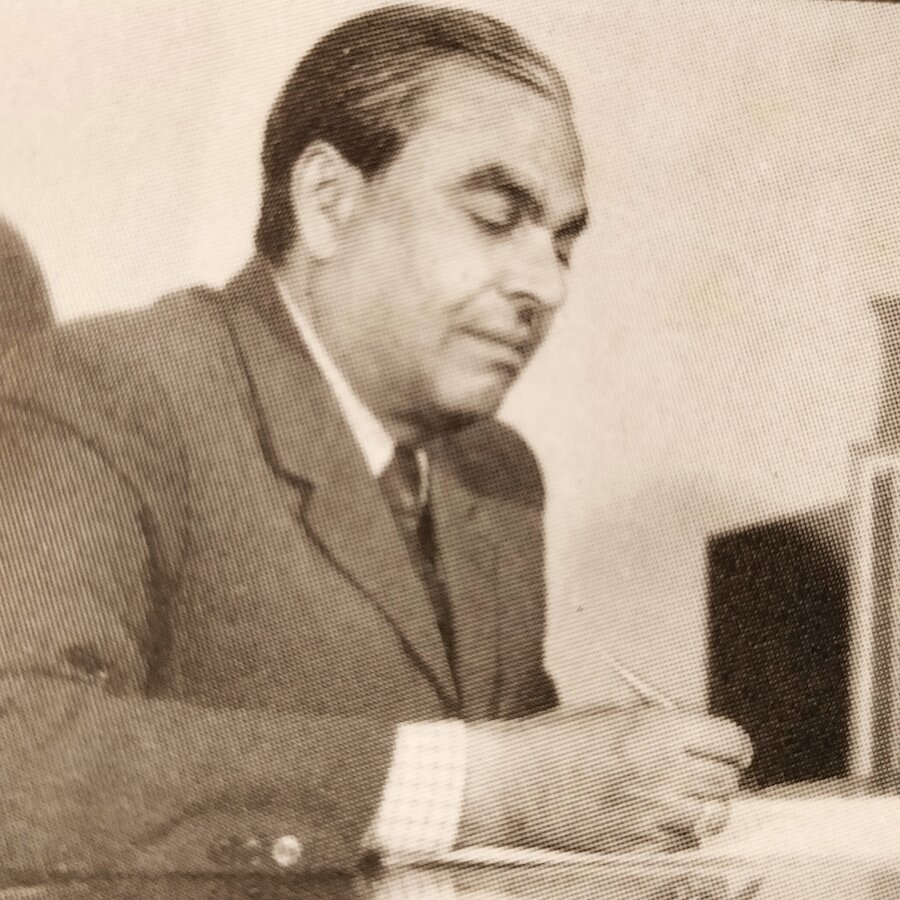In his preamble, the author dealt with the complex political context surrounding the official involvement of India in the restoration of Angkor Wat:
“Besides assistance in all other fields, measures were also initiated by the Government of India to preserve the heritage of the country in the form of beautiful monuments; the temple of Angkor Wat being the centre of the gratest attraction. With this end in view the Government deputed a small team in November-December 1980 to assess the damages to the monuments in the country and to submit a rough estimate for repairs. Since the estimated amount was very heavy, the proposal for undertaking the works was submitted to the UNESCO through Shri T.N. Kaul, our permanent representative. He discussed the issue with other member-countries, including the head of the Institution; but could not break ice because the countries represented in the UNESCO were not prepared to recognise the new régime. The present Heng Samrin Government of Kampuchea was not represented in the United Nations and in its place, through the persistent efforts of the United States of America, China, NATO and ASEAN countries, the Government of ‘Democratic Kampuchea’ of Pol Pot, which since 1982 had been called “Democratic Kampuchean Coalition Govern¬ ment”, continued to occupy the seat in the world body.
In such peculiar circumstances Shri T.N. Kaul, now Ambassador in Russia, sent a cable to the then Prime Minister, Smt. Indira Gandhi, appealing her to do something on our own in order to establish a better claim on the project of the preservation of the monuments. The Prime Minister, nourishing great attachment with ancient monuments as a heritage, lost no time in issuing necessary instructions in the matter. On the recommendations of the earlier team, therefore, another team of nine archaeologists was deputed in 1982 to concentrate on the temple of Angkor Wat and submit a detailed project report on preservation including the total expenditure involved. The project report was furnished in detail to the Government in the same year, which was widely acclaimed by the experts including the late Prime Minister, Smt. Indira Gandhi. All the proposals and recommendations made in the report were readily approved and the Prime Minister anxiously expressed her willingness to undertake the prestigious work of international importance.
Agreement between two countries on political level takes a long time on account of a number of formalities to be observed. Hence, inspite of the readiness of the Government of India to start the works immediately, the final agreement for it continued to hang on till the beginning of the year 1986. Of all the factors which stood in the way of the bilateral agreement, the finacinal aspect was supreme. The financial economy of Kampuchea had already been shattered by the continuous war-like conditions. On the other hand, it was not possible for the UNESCO to undertake the preservation works because People’s Republic of Kampuchea continued to be unrecognised by the countries represented in the world body. Several agencies, therefore, made an attempt to earn the credit of repairing Angkor Wat. A few representatives from Australia decided to establish a non-governmental agency, which could play a host to all the experts in the work, besides meeting the expenditure on repairs. The opinion of the Government of India was also sought in the matter with an assurance that the entire work would be based on the project report prepared by the Indian team of archaeologists. In reply the Archaeological Survey of India conveyed its willingness to accept the proposal subject to the condition that the Survey would play the dominating role. The proposal of a non-governmental agency, however, did not materialise. In the meantime there were further developments when some European countries wished to participate in the work in collaboration with India. The Government of Kampuchea had no objection to the proposal, but the Government of India did not accede to the request. Always anxious to undertake the work, all alone at any cost, the Government of India was never interested in any type of collaboration. At long last, the circumstances compelled the other countries to withdraw themselves leaving the Government of India a free hand to enter into an agreement. […] I consider it to be the most appropriate occasion to express my grateful thanks to Dr. (Mrs.) D. Mitra, former Director General of the Archaeological Survey of India, for having proposed my name as the leader of the nine-member team in 1982 to prepare the project report on the preservation of Angkor Wat. She deserves all credit for standing firm on her decision inspite of strong opposition by the higher authori¬ ties. I came to know of the proposal only when the officials expressed a desire to interview me before acceding to the decision of Mrs. D. Mitra. They would probably not have yielded to the proposal if my case had not been supported by Dr. (Mrs.) Kapila Vatsyayan, who was Joint Secretary in the Ministry. She supported me by pleading that I had established a great name in the Buddhist world on account of my work leading to the discovery of the lost town of Kapilavastu.”[pp x‑xii].
This report of an exploratory mission for the preservation of Angkor commissioned by the Indian governement was authored by Shri K.M. Srivastava, a leading Indian archeologist. While several chapters give precious information about the way architectural conservation was considered in the 1980s, it is also an important document reflecting the Indian approach to the Khmer civilization.
In effect, the author analyzes the architectural significance of Angkor Wat and surrounding structures with his profound knowledge of Indian culture and history, giving us a ‘reading’ of the monuments that departs from the usual rationalizations suggested by Western scholars and researchers.
The explanation for the four-faced towers so characteristic of the Bayon and Banteay Chhmar temples is particularly stimulating. These structures, claims the author, reflect a distinctively Indian outlook on sexuality and symbolic representations of the sexual pulsion.
First, the author quotes the Brihatsamhita:“The entire universe, right from the creator (Hiranyagarbha) to the smallest worm, is born of the union of male and female. So why should anybody feel ashamed of it, when even the Lord Siva was forced to have four faces on account of His longing to have a look at a maiden?”. And he adds: “The above story refers to an incident in which the celestial courtesan (apsara) Tilottama was perambulating the Lord Siva and Parvati was sitting in his lap. The lord was so much captivated by the charming personality of the apsara that he developed a desire to have a full glimpse of her. The Lord at the same time did not dare to annoy his spouse Parvati on being detected. He, therefore, assumed four faces to have a look at the damsel’s beauty”.
On the technical aspect of the projected restoration — which was later criticized by international experts –, Indian specialists did not hide their disagreement with EFEO methods before the civil war, for instance this remark by Prof. K.S. Sankaran: “In the southern portion of the third corridor the French had removed the columns, dome, slab etc. They had also provided at the foundation level a raft to support the interior row of columns. It is not clear how exactly they have carried out the repairs in the foundation. If the Archaeological Department of India is going to reconstruct the corridor by the assemblage of stones of the twelfth century a new stress field will be generated in the superstructure and the distress in the foundation and superstructure will be developed. A new pattern of cracks will appear depending upon the foundation treatment given by the French.” [p 126]


